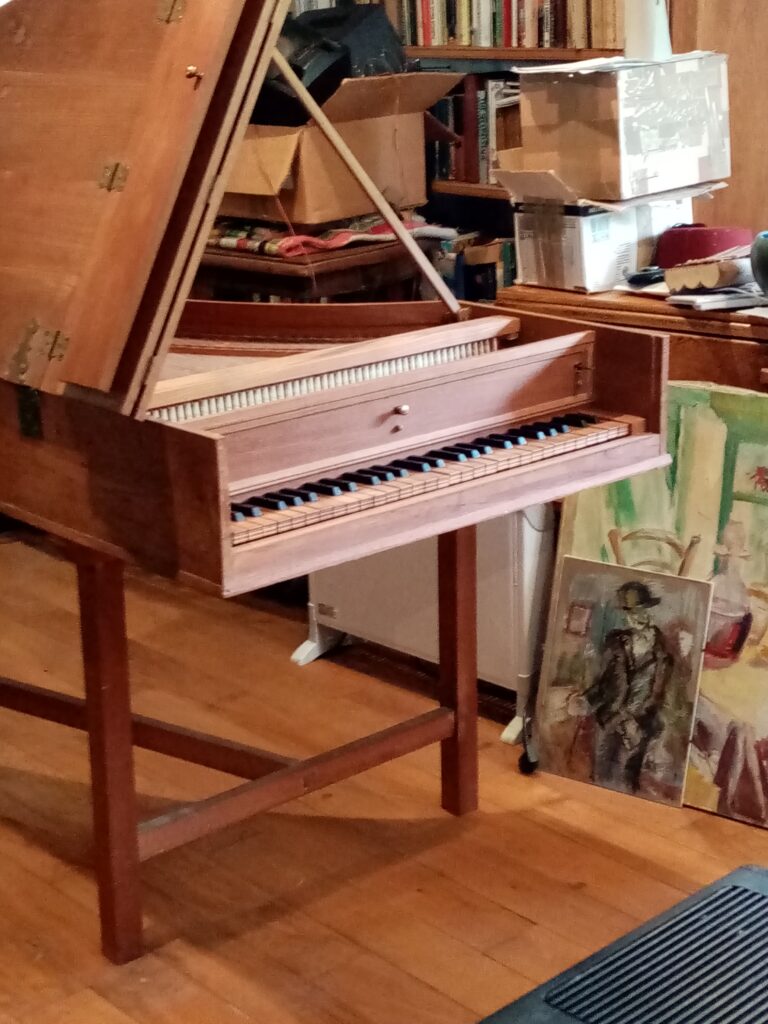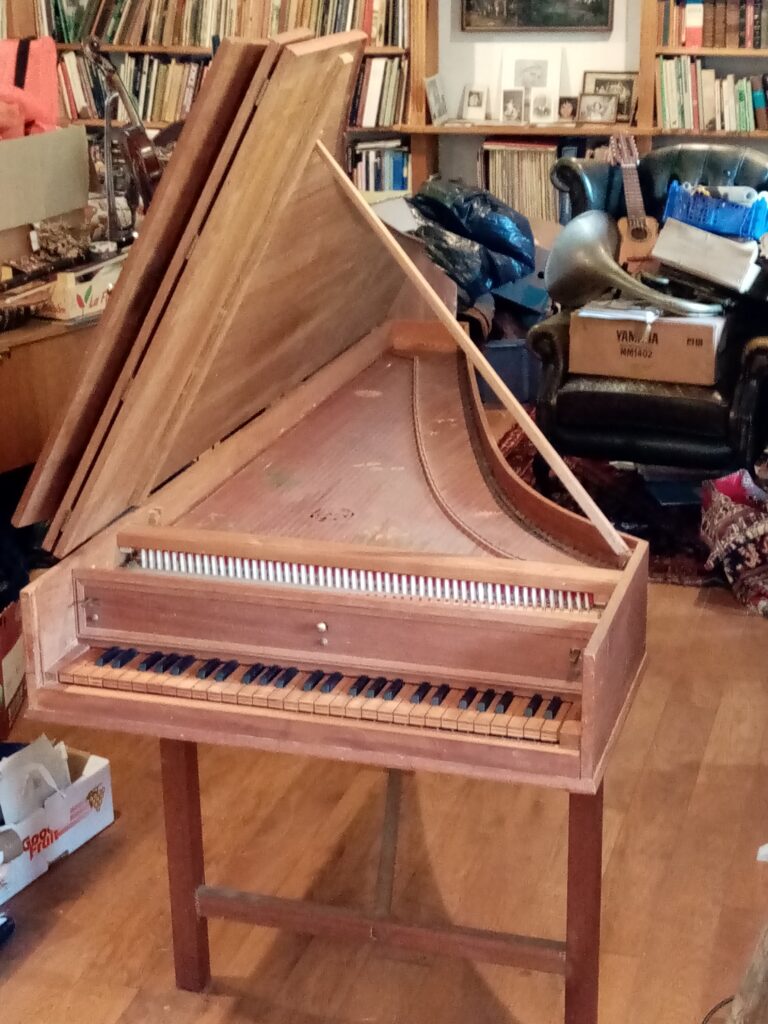
Most of the readers on this blog know John Brown as a chairmaker and writer. But as I have gotten to know his family and friends, I’ve learned he was much more. I knew JB was a boatbuilder, and his cuttyhunks still fetch good money. He was also a jet pilot, a fine art painter and a man of letters. But I didn’t know that he ever built musical instruments. One of JB’s sons has to part with a harpsichord made by the late John Brown. If you are interested in Baroque-era instruments, please read on.
— Christopher Schwarz
Here’s a unique opportunity to own a harpsichord made by the great John Brown, decorated with British wildflowers by renowned artist and musicologist Richard Swaby Platt, a great friend of JB. Though JB was of course best known as a chairmaker, magazine columnist and author of the seminal book “Welsh Stick Chairs,” he built other things, too – including this Flemish-style harpsichord, which started out as a kit from harpsichord revolutionary Wolfgang Zuckermann (though JB made it his own).
The instrument is currently owned by JB’s son Ieuan Einion, a writer and musician who lives in France. “I don’t really want to part with it because of its sentimental value to me but I’m running out of space (it is one of seven keyboard instruments I have, including three harpsichords),” writes Ieuan. “I would be happy for it to go to someone who appreciated JB’s work and philosophy, and wanted part of his history; a serious musician who wanted a light, easily transportable instrument might be better advised to look elsewhere.”
I asked Ieuan to describe the instrument, as I know little about this form. “JB’s harpsichord was built from the kit that WZ produced after his move to England, not using the sides provided by Zuckermann, but replacing them with solid teak on the straight sides (15m thick) and laminated teak on the bent side (2 X 7mm glued). This has the effect of turning an Italian harpsichord into more like a Flemish one,” he writes. “Italian harpsichords were extremely light and were fitted into a heavier outside case from which they could be removed. The single most important development in Flemish instruments was that the soundboard was joined to the outer case.”
The teak, which had been destined for high-end boatbuilding, adds some heft; the JB harpsichord weighs 40-45kg, Ieuan estimates. It is 86 cm wide, 22 cm deep and 190 cm long.

“There are 54 keys BB – e” – with brown naturals (cherry?) and black accidentals (ebony or grenadilla?). It has two sets of strings (referred to as 2 x 8′), which can be engaged independently or together, and a lute stop. It can be tuned to A = 415 hz or A = 440 hz.”
“Zuckermann’s great achievement was making a hitherto specialist instrument into a project achievable by the home builder, which is probably what attracted JB to it, accompanied by his love of baroque music,” writes Ieuan. “We played one of JB’s favourite works, the Telemann viola concerto with the family band at his memorial event in 2008.
“The JB harpsichord has not been played since the 1990s and will require a good service from someone who knows what they’re doing, mostly fine tuning and replacing where necessary the plectra, checking the dampers etc (maybe two-three days work for someone who knows what they’re doing).”
Ieuan is asking U.S.$20,000. Interested parties, please click here to send him an email.


دیدگاهتان را بنویسید